
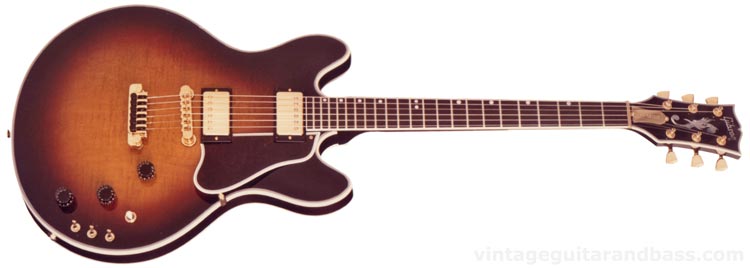
The Gibson ES Artist was developed in the late 1970s, by the same R&D team that produced the RD Artist. The RD series had been highly acclaimed, and it is no surprise that the circuitry was expanded to popular existing models: the Les Paul and ES. From the promotional material of the time:
“Since it's introduction in 1958, the Gibson ES series has been the "workhorse" for countless live, road and studio performance minded musicians. The ES 335, ES 345 and ES 355 (more recently the ES 335Pro and ES 347) have become familiar and strongly associated with entertainment giants such as blues guitarist B.B. King. Most everyone knows of B.B.'s ES 355 affectionately referred to as "Lucille". The time tested and studio proven credentials of the ES series add up to the most versatile guitar series in existence today. We are pleased to present Gibson's new "Active" ES Artist model...”
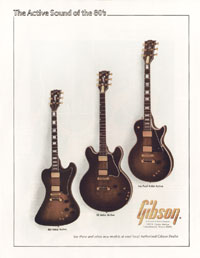
Gibson ES Artist - The Active Sound Of The 80s (1979)
This advert features three Artist series guitars; each with active electronics designed by Bob Moog: the RD Artist which had been around since 1977, the semi-acoustic ES Artist and Les Paul Artist...
[more]
The ES Artist used the same Moog bright mode/expansion/compression circuitry, as the RD, though with somewhat simplified controls - rather than volume controls for each pickup, there was just one master volume, with the mini-toggle effects working independently of each other, like the later RD79 version of the RD Artist.
With the high output possible from this guitar, the chance to produce feedback was greatly increased; consequently the traditional f-holes of other Electric Spanish models were replaced with a solid top. The guitar was of course semi-hollow inside with the standard maple block running along the centre, into which the bridge and tailpiece studs were mounted. In fact the propensity for feedback was such, that Gibson advised reducing the guitars volume under certain situations... from the Active Artist Series brochure:
“When using the Compression, Expansion and Bright Mode switches in combination, it is advisable to lower the output level by means of the Master Volume Control... Collectively the Compression, Expansion and Bright Modes produce a very powerful output signal, particularly in the 4K (400HZ) range. The best results will be experienced when using all three switches with the treble control in the center (0) position. If the treble control is boosted when all three modes are activated, high frequency feedback may be experienced.”
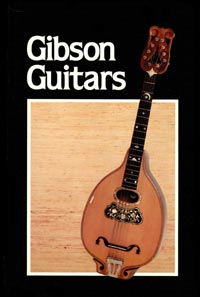
The ES Artist was only included in one full-line catalogue, produced in 1980 - see the 1980 Gibson catalogue.
Furthermore, the pickups had to be epoxy sealed to reduce problems with them becoming microphonic at high volume levls..
“The pickup covers are not removable. They are also fully shielded to reduce hum and RF noise. Since the ES Artist circuitry has been carefully matched to these pickups, use of any other pickup in this guitar is nor recommended.”
The ES artist was not a significant commercial success, perhaps in part due to the problems mentioned above, but perhaps more because of the step away from Gibson tradition. Generally players associated ES series guitars for their woodier tones.. with jazz and with blues.. but many also desired the look of an f-hole semi. It is no surprise then, that Gibson soon released the hugely more traditional ES Dot with passive wiring, f-holes and a mahogany neck.
The ES Artist did outlive the other active Artist series guitars though, first appearing in Gibson US price lists in June 1979, and remaining right through to February 1985. Other Artists series guitars were last listed in 1980! The ES was the most expensive of these guitars - compare the recommended retail prices in the table below. Shipping figures for the 1980s are not available, but to some extent sales can be inferred from the listed prices; i.e. rising up until 1982, and then dropping off somewhat beyond this time.
| 1979 | 1980 | 1981 | 1982 | 1983 | 1984 | 1985 | |
| ES Artist | $1399 | $1399 | $1549 | $1599 | $1599 | $1399 | $1399 |
| Les Paul Artist | $1299 | $1299 | |||||
| RD Artist | $999 | $1099 |
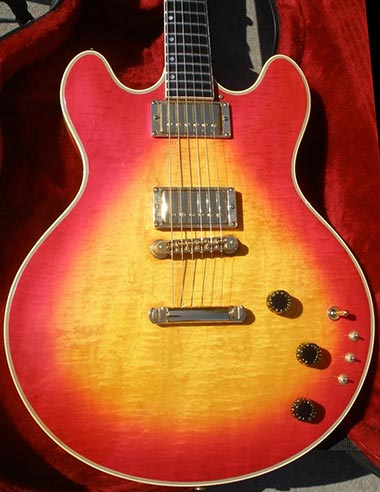
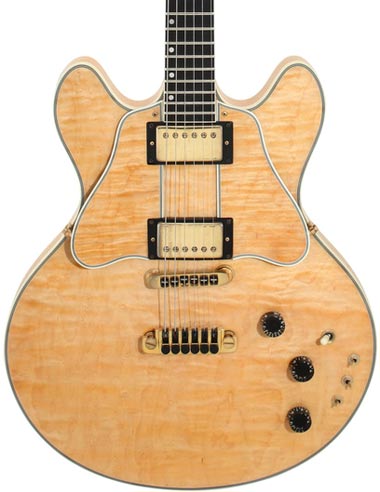
€1500